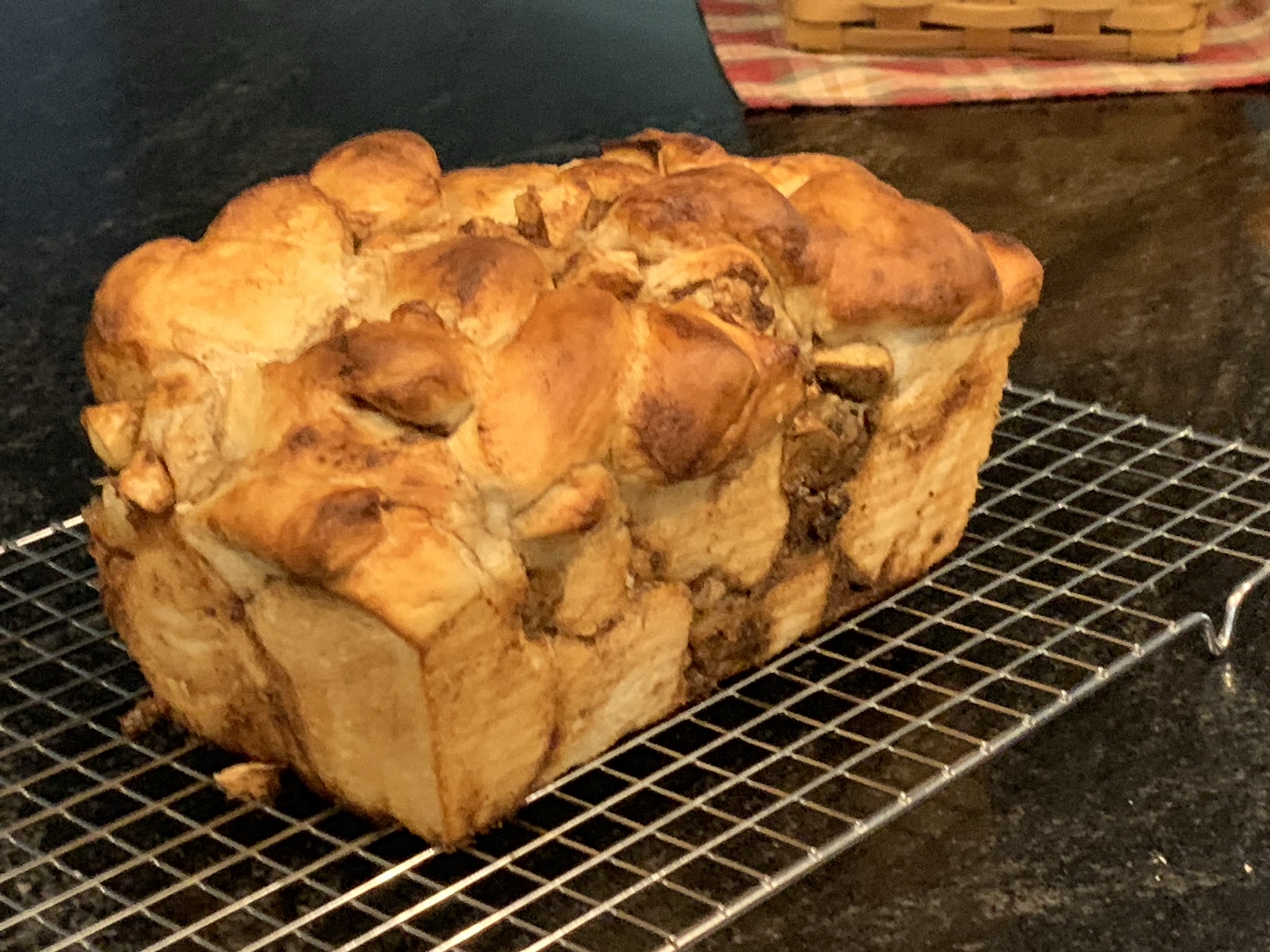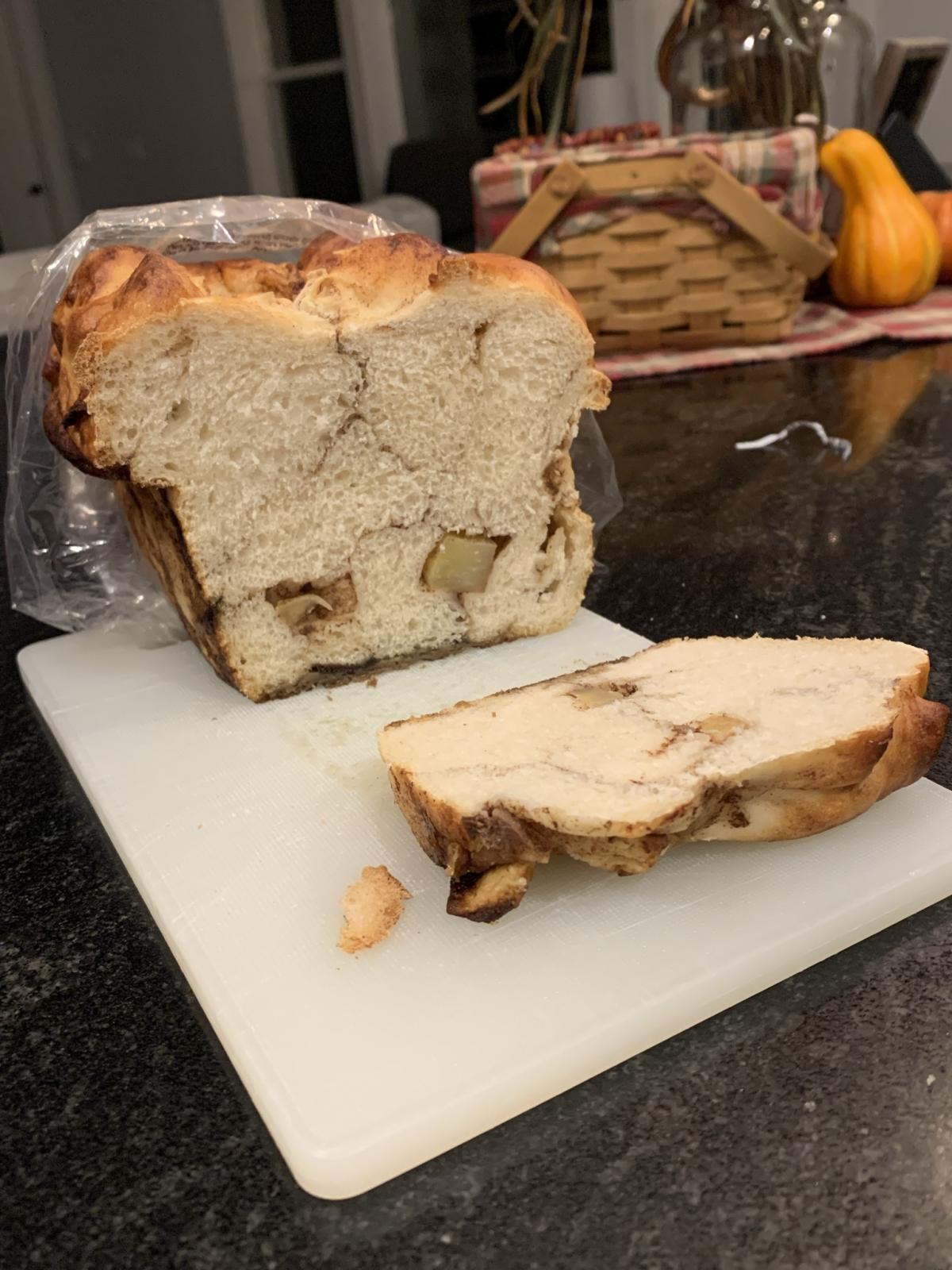Although, really, I think it would be better named “Apple Chopped Bread”. One could almost treat it as a pull-apart bread but it toasts up so nicely that I prefer to slice it. As its appearance suggests, flavor matters more than beauty for this bread.
I find myself wanting to make this bread at least once each Fall when apples are in abundance. Although there is no added sugar in the dough, the apples, brown sugar, and cinnamon in the filling provide enough sweetness without becoming cloying. And, though the original recipe doesn’t call for it, I like to add a bit of mace to round out the flavor.
The recipe in Clayton's New Complete Book of Breads makes two 4x8 loaves. My tweaked version is scaled down to one 4x8 loaf:
Dough
Warm water. 1.25 cups / 285g
Active dry yeast 1.5 teaspoons / 3g
Bread flour. 3-3.5 cups / 430g
Salt. 1.5 teaspoons / 10g
Butter, softened 2 tablespoons / 28g
Measure the water into a medium mixing bowl. Sprinkle the yeast on the water. When the yeast has hydrated (most of it will sink to the bottom of the bowl), add the remaining ingredients. Mix to form a shaggy dough. Turn the dough out onto a lightly floured surface and knead for 8-10 minutes. The dough will smooth out and become elastic.
Place the dough back in the bowl and cover it to prevent drying. Allow the dough to ferment until it doubles in volume, which will take approximately an hour. Turn the risen dough onto a floured surface and roll or press it into a 16-inch square that is approximately half an inch thick.
While the dough rises, thoroughly butter or grease an 8x4-inch loaf pan.
Filling
Apple, diced 1 cup / 110g
Egg, beaten 1 large./ 55g
Walnuts or pecans, chopped 0.25 cup / 28g
Brown sugar, packed 0.25 cup / 50g
Cinnamon 1.5 teaspoon / 4g
Mace 0.25 teaspoon / -
Peel, core and dice the apple(s) and scatter them on the rolled-out dough. Pour the beaten egg over the diced apple. Combine the brown sugar, cinnamon, and mace and sprinkle over the apple/egg mixture. Fold the dough so that the filling is completely enclosed. Use a bench scraper or chef's knife to roughly chop the package into chunks approximately 1-inch square. (No, it won't be pretty!).
Scoop the chopped up dough and filling into the prepared loaf pan. Cover the pan loosely with plastic wrap and let the bread rise until it is slightly above the edge of the pan. Depending on room temperature, this may take 45-60 minutes.
Preheat the oven to 375F. Place the pan in the oven and bake for 40-45 minutes. The internal temperature should be 190-195F. Alternatively, a skewer or cake tester inserted in the center of the loaf should come out clean when the bread is ready.
Remove the baked loaf from the oven and use a butter knife or similar tool to gently loosen the loaf in the pan. Carefully remove the loaf from the pan (it will be fragile and the filling will still be molten) and place it on a cooling rack. Cover loosely with a towel while the loaf cools to room temperature.
This bread is good as is or with a smear of butter. It makes fabulous toast. I suspect it would make marvelous French toast, too, but haven’t tried that yet. Edit: Have confirmed this morning that the bread makes very good French toast, indeed.


Paul